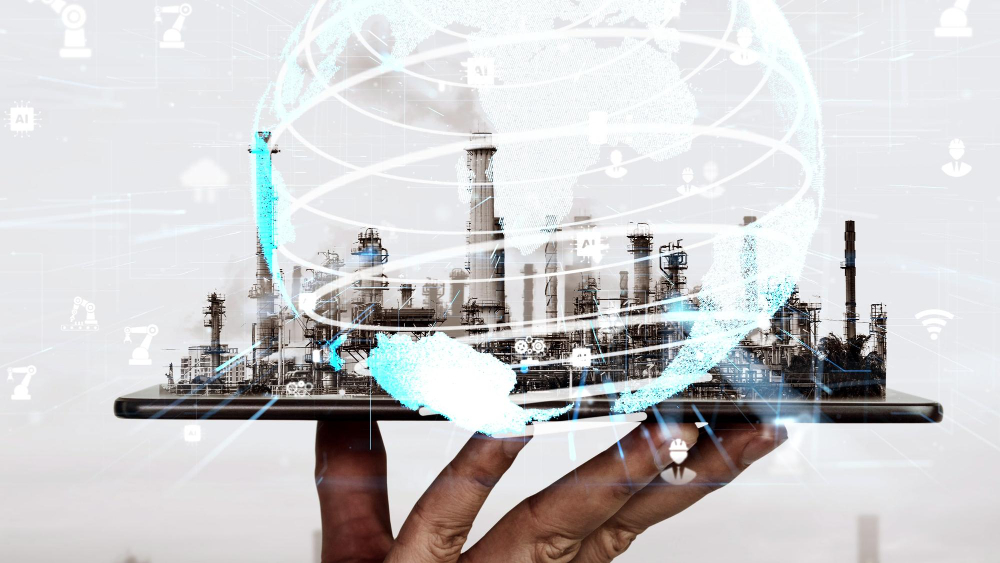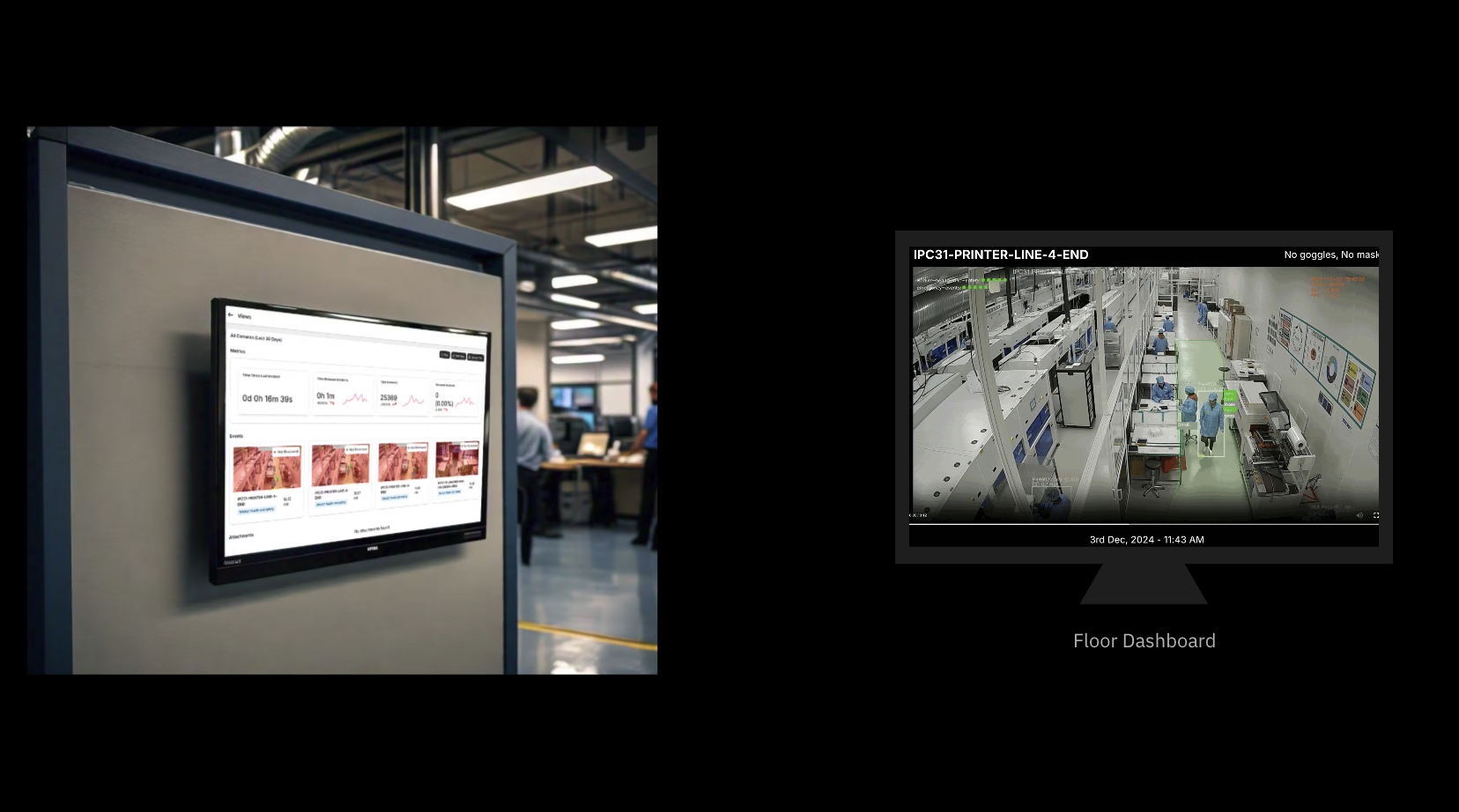What is EHS and Why It Is Important – EHS Meaning and Management

See It In Action

Safety AI Software in Action
See how Visionify's Safety AI Software monitors workplace safety in real-time
Example Videos
Safety AI Software in Action
See how Visionify's Safety AI Software monitors workplace safety in real-time
Forklift Zone Monitoring with Vision AI
See how Vision AI monitors forklift zones in real-time to prevent accidents
Hard Hat Compliance in Manufacturing
Vision AI PPE Compliance for Manufacturing
Key Takeaways
- EHS Definition: Environment, Health, and Safety – a framework for protecting people and the environment
- Business Benefits: Reduces incidents, ensures compliance, improves reputation, and enhances productivity
- Core Components: Risk assessment, training, incident management, and continuous improvement
- Technology Impact: Vision AI is transforming EHS through automated monitoring and early hazard detection
- Implementation: Successful EHS programs require leadership commitment and employee engagement
Understanding EHS: The Fundamentals
EHS (Environment, Health, and Safety) represents a comprehensive approach to managing workplace risks, protecting employee wellbeing, and minimizing environmental impact. This integrated framework has become essential for organizations across all industries seeking to operate responsibly and sustainably.
 Safety in Manufacturing is of utmost importance
Safety in Manufacturing is of utmost importance
At its core, EHS encompasses three interconnected domains:
Environmental Management: Focuses on reducing environmental footprint, managing waste, preventing pollution, and ensuring compliance with environmental regulations.
Health Protection: Addresses occupational health concerns, disease prevention, ergonomics, and overall employee wellbeing.
Safety Management: Concentrates on identifying hazards, preventing accidents, ensuring proper equipment usage, and creating safe working conditions.
Why EHS Matters: The Business Case
Implementing robust EHS practices delivers multiple benefits beyond regulatory compliance:
1. Human Protection
The primary purpose of EHS is protecting people. Effective programs prevent injuries, illnesses, and fatalities, preserving the organization's most valuable asset – its workforce.
2. Legal Compliance
EHS helps organizations navigate complex regulatory requirements across jurisdictions, avoiding penalties, fines, and legal liabilities.
3. Operational Excellence
Safety incidents cause disruptions, delays, and inefficiencies. Strong EHS programs enhance productivity by minimizing downtime and maintaining operational continuity.
4. Financial Performance
EHS incidents carry significant direct costs (medical expenses, compensation) and indirect costs (lost productivity, damaged equipment, investigation time). Prevention through EHS management reduces these financial burdens.
5. Reputation Management
Organizations with strong safety records and environmental stewardship build trust with customers, communities, and investors, strengthening their market position.
Core Elements of Effective EHS Management
 EHS management in a modern workplace
EHS management in a modern workplace
Successful EHS programs share several essential components:
Leadership Commitment: Visible support from top management establishes safety as a non-negotiable priority.
Risk Assessment: Systematic identification and evaluation of workplace hazards forms the foundation for preventive measures.
Written Programs: Documented policies, procedures, and responsibilities provide clarity and consistency.
Training and Communication: Regular education ensures employees understand hazards and safety protocols.
Incident Management: Thorough investigation of accidents and near-misses identifies root causes and prevention opportunities.
Performance Measurement: Tracking leading and lagging indicators helps evaluate program effectiveness.
Continuous Improvement: Regular reviews and updates keep EHS programs relevant and effective.
Transforming EHS with Vision AI Technology
 Vision AI for EHS management
Vision AI for EHS management
Traditional EHS management relies heavily on manual inspections, human observation, and reactive measures. Vision AI technology is revolutionizing this approach by enabling proactive, continuous monitoring and early intervention.
How Vision AI Enhances EHS Management:
Real-time Hazard Detection: Vision AI systems analyze video feeds to identify unsafe conditions like spills, blocked exits, or equipment malfunctions before they cause incidents.
Automated Compliance Monitoring: The technology continuously verifies adherence to safety protocols, such as proper PPE usage, without requiring constant human supervision.
Worker Safety Monitoring: Vision AI can detect unsafe behaviors, improper lifting techniques, or ergonomic issues, providing immediate feedback to prevent injuries.
Emergency Detection: Early identification of smoke, fire, or other emergency conditions allows for faster response times and reduced damage.
Data-Driven Insights: Vision AI generates comprehensive safety analytics that help identify trends, hotspots, and opportunities for improvement.
Practical Applications Across Industries
Vision AI's versatility makes it valuable across diverse work environments:
Manufacturing: Monitors machine guarding, PPE compliance, and material handling practices.
Construction: Verifies fall protection usage, detects unsafe scaffolding, and monitors heavy equipment operations.
Warehousing: Ensures proper lifting techniques, monitors forklift operations, and identifies storage hazards.
Healthcare: Verifies infection control procedures, monitors patient handling, and ensures proper waste disposal.
Implementing Successful EHS Programs
Creating an effective EHS culture requires more than policies and technology:
-
Secure Leadership Buy-in: Demonstrate the business case for EHS investment.
-
Engage Employees: Involve workers in hazard identification and solution development.
-
Integrate Systems: Align EHS with other business processes rather than treating it as a separate function.
-
Leverage Technology: Utilize tools like Vision AI to enhance monitoring capabilities and generate actionable insights.
-
Measure and Communicate: Track performance metrics and share successes to maintain momentum.
Conclusion
EHS management is no longer just a regulatory requirement but a strategic business function that protects people, planet, and profit. Organizations that embrace comprehensive EHS programs—enhanced by technologies like Vision AI—create safer workplaces, reduce environmental impact, and gain competitive advantages.
As workplace risks evolve and regulatory landscapes change, forward-thinking organizations will continue to innovate their EHS approaches, leveraging new technologies to create increasingly safe, healthy, and sustainable operations.
Ready to transform your EHS management with Vision AI? Contact Visionify today to learn how our solutions can help enhance your safety performance and protect your most valuable assets.
Frequently Asked Questions
Find answers to common questions about this topic
Want to learn more?
Discover how our Vision AI safety solutions can transform your workplace safety.
Schedule a DemoSchedule a Meeting
Book a personalized demo with our product specialists to see how our AI safety solutions can work for your business.
Choose a convenient time
Select from available slots in your timezone
30-minute consultation
Brief but comprehensive overview of our solutions
Meet our product experts
Get answers to your specific questions
Related Articles
Subscribe to our newsletter
Get the latest safety insights and updates delivered to your inbox.


